Convert a Table of Numbers to a Visualization
August 09, 2023 - by Bill Jelen
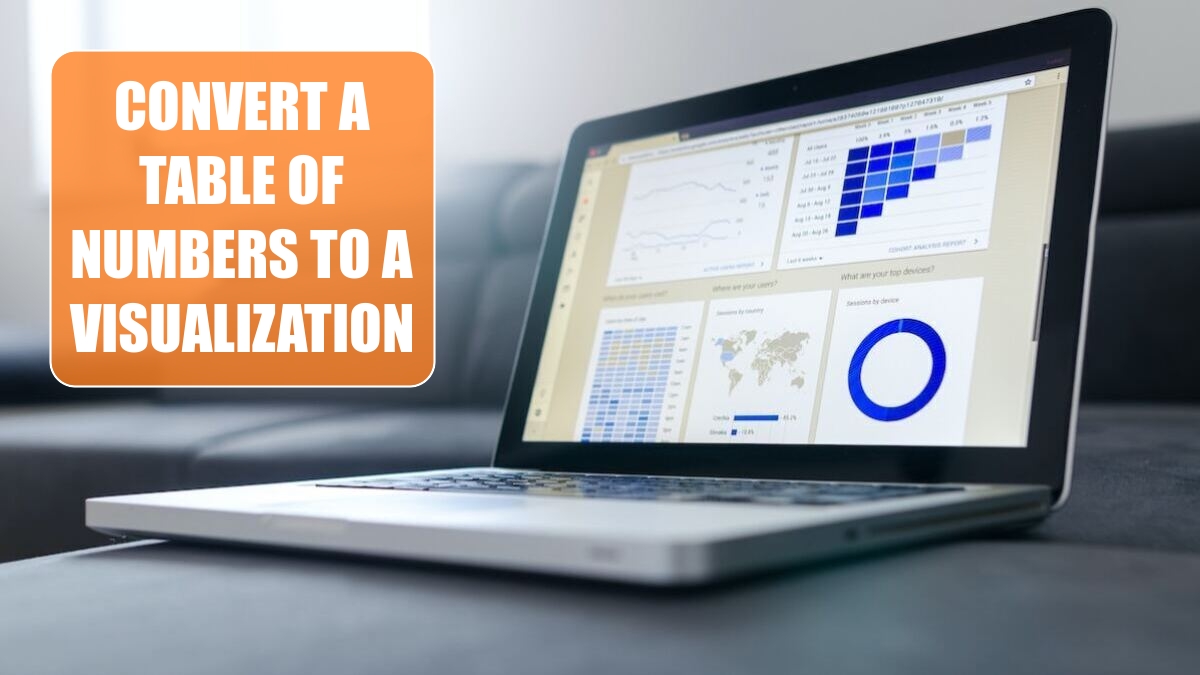
Problem: My manager’s eyes glaze over when he sees a table of numbers. Is there anything I can do to help him spot trends in the data?

Strategy: You can use one of the three new data visualization tools on the Conditional Formatting menu: data bars, color scales, and icon sets.
Adding a data bar to a range adds an in-cell bar chart to each cell. You can see which cells have the largest values by seeing which cells have the most color.
To add data bars, you select a range of numbers and then select Home, Conditional Formatting, Data Bars, choose a color. Excel offers six gradients and six solid. You can choose More Rules to add any of 16 million colors.
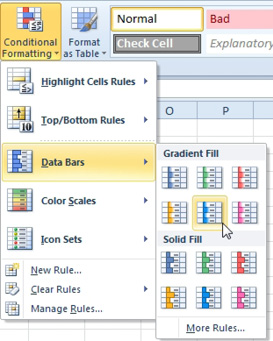
Below, you can see that Wednesday is the busiest day. Calls fall of on Friday for everyone except Missy. Missy is consistently the strongest performer.

Gotcha: You should not include any total cells in your selection when applying conditional formatting. The relative size of the totals would make all the detail numbers receive small bars. Below, the 904 in cell G6 makes all the cells in B2:F5 look relatively the same.
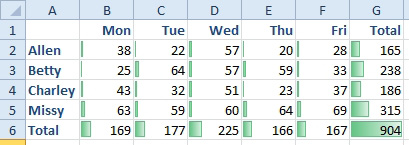
Additional Details: You can use color scales to apply a mix of colors to a range. Excel offers built-in three-color scales such as red-yellow-green as well as two-color scales. The two-color scales look better than three-color scales when printed in monochrome. You can also use More Rules to design your own color scheme. Below, the largest numbers are in the darker green, and the smallest numbers are in the lighter yellow.
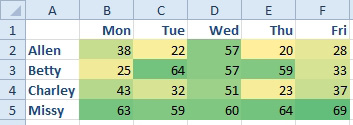
The final new visualization is icon sets.
In Excel 2010, there are 20 sets of icons. Some have three symbols, others have four, and some have five.
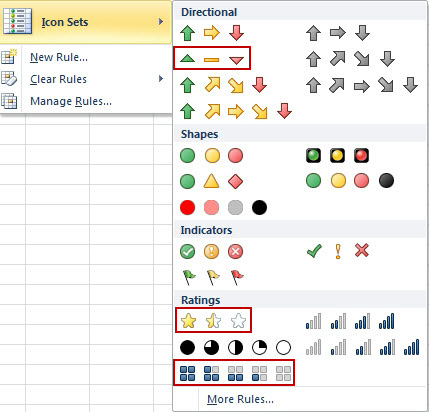
Note that for many of these sets you need to print in color in order for the reader to differentiate the symbols. If you are printing in monochrome, the arrows or power bars are good choices.
After you choose an icon set, Microsoft will display the icon at the left of each cell. Since numbers are usually right-aligned, the number from B2 and the icon from C2 are too close together and many will think that they go together.
I’ve begun using Ctrl+1 to visit the Format Cells dialog. On the Alignment tab, use a horizontal alignment of Right (Indent). You can then increase the indent to 2 or 3 to move the numbers closer to their icons.
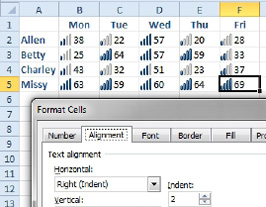
The icons won’t respond to the horizontal alignment of the cell, unless you use Home, Conditional Formatting, Manage Rules, Edit Rule, Show Icon Only. Ironically, when you use this setting, the icon responds to the Left, Center, and Right Align buttons in the Home ribbon!
This article is an excerpt from Power Excel With MrExcel
Title photo by Lukas Blazek on Unsplash
